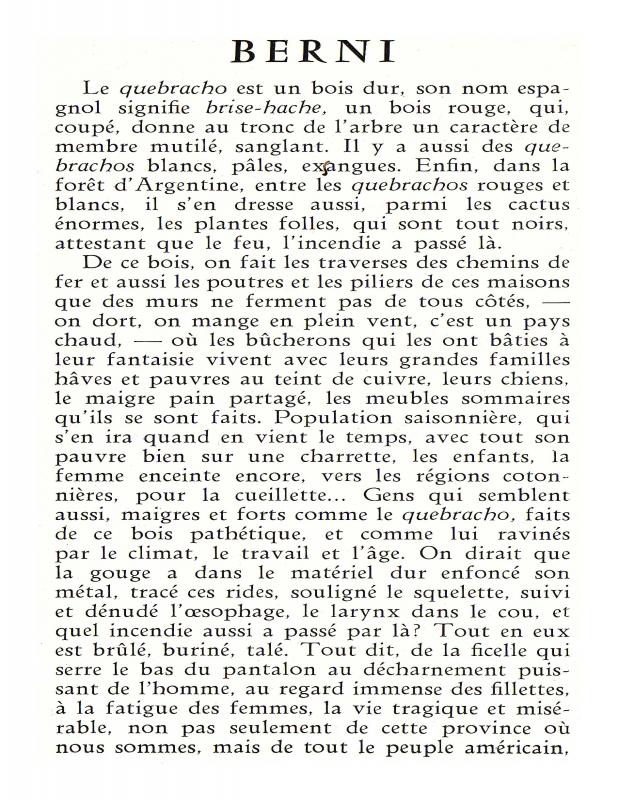Antonio Berni (1905–81) is one of the most important Argentine artists in the twentieth century. Starting in 1925, he studied in Europe, settling in Paris where he came into contact with the Surrealist avant-garde and communist ideas. Upon returning to Argentina in 1932, he showed his Surrealist works at the Amigos del Arte [Friends of Art]. The following year, he joined the Equipo Polígrafo [Graphic Work Team] founded by David Alfaro Siqueiros (1896–1974). That group made the mural, Ejercicio Plástico [Visual Exercise], in Don Torcuato on the outskirts of Buenos Aires. His Nuevo Realismo [New Realism] theory was based on the idea of a transcendent realism by means of politically and socially committed art.In 1944, he started the Taller de Arte Mural [Mural Art Workshop]. In the fifties, he made paintings about rural workers, especially those from Santiago del Estero, a province in northern Argentina. This gave rise to his narrative series of painting-collages on Juanito Laguna. In 1962, he was awarded the Grand Prize for Prints and Drawings at the Venice Biennale. The following year, Berni began working on a print series on Ramona Montiel. Though he continued working in the media of painting, collage, and printmaking, Berni, who was from Rosario, Argentina, also made objects, installations, and happenings in the sixties and seventies while exploring stylistic variations of figurative realism. The Berni exhibition in Bucharest (Romania) evidences the artist’s political engagement during the Cold War, specifically in connection with the Frentes por la paz [Peace Alliance], which was supported by communist policies. Significantly, the cornerstone of the exhibition was Manifestación [Demonstration] from 1934, which shows working-class women carrying a flag with the image of a dove. In addition to this painting, which figured prominently in the exhibition catalog, the show included works from the Santiago de Estero series that had been exhibited the year before in Paris. In this text, Berni is presented as an intellectual and artist committed to the Argentine people. The document also references the text by French poet and activist Louis Aragón, who wrote the introduction to the aforementioned show in Paris (see doc. no. 779832). If the show in Paris clearly demonstrated international Communism’s political commitment to peasant struggles during the Cold War, the show in Romania suggested that leftist intellectuals were also committed to peace. This exhibition took place during Berni’s trip to Europe in which he also visited Berlin (where he had an exhibition) and Leipzig (Germany), Prague (Czechoslovakia), Warsaw (Poland), and Moscow (USSR).

